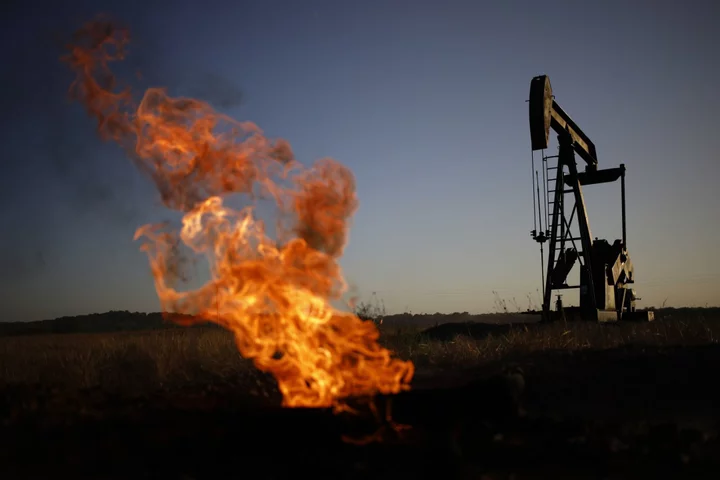Scores of nations have pledged to slash their methane emissions, recognizing that the gas is a powerful climate pollutant and stifling it is one of the best and fastest ways to slow global warming. But when it comes to financing that work, the world isn’t stepping up.
The reasons why range from the simple (countries actually need to seek the money) to the complex (methane doesn’t get prioritized by major donors), according to a new analysis of the funding gap.
“There’s a fundamental mismatch right now between the importance of cutting methane emissions” and “the funding available to do it,” said Jonathan Banks, a global director at the Clean Air Task Force, the environmental organization that authored the assessment. “Current levels of international financing for methane mitigation fall woefully short of what we need.”
The issue looms large as countries prepare for another round of UN climate negotiations in Dubai this November.
The world must devote some $119 billion to limiting methane releases from the agriculture, energy and waste sectors to keep global temperature rise below 2C. But current spending on the issue is only about 10% of that and was less than 2% of international climate finance altogether in 2019 and 2020, according to figures cited in the report.
Unlike carbon dioxide, which can take years to warm the atmosphere, methane packs its biggest punch during the first two decades after it is released. That means that cutting methane pollution can quickly help slow the rate of global warming and avoid catastrophic climate tipping points. And in the oil and gas industry, capping methane leaks amounts to what US Climate Envoy John Kerry has called a “plumbing problem,” with existing technology available to replace leak-prone valves and controllers.
Read More: Deal in Works to Halt Some of World’s Biggest Methane Leaks
Methane-related contributions from major climate finance donors to developing nations amounted to less than $24 billion over five years, the Clean Air Task Force and consultancy WSP found. While multilateral development institutions such as the World Bank have led the way, organizational barriers limit the potential, the task force concluded.
Many key donors don’t have an internal champion for methane abatement, and the issue doesn’t neatly fit into the flow chart at some critical institutions, instead crossing over workstreams focused on agriculture, energy and the circular economy. The lack of tools to measure, report and verify methane emissions also holds back funding, since it’s hard to benchmark progress without that data.
Development finance institutions should do a better job promoting methane mitigation and take steps to prioritize the issue so it becomes a focus of investment decisions, the Clean Air Task Force said.
But developing nations also need to do more, the assessment found. Some countries don’t seek out methane financing, and there are too few high-quality mitigation projects ready for funding, according to the analysis.
Nevertheless, there are positive signs, Banks said. For instance, President Joe Biden in April asked countries to join the US in a “methane finance sprint” to marshal at least $200 million to support methane abatement in developing countries by the COP28 summit.
“It’s okay to start with the sprint, but we need to develop the funding that can support the marathon,” Banks said. “We have to start somewhere, but we’re going to have to see a lot more commitment of funding to be able to capitalize on this.”

